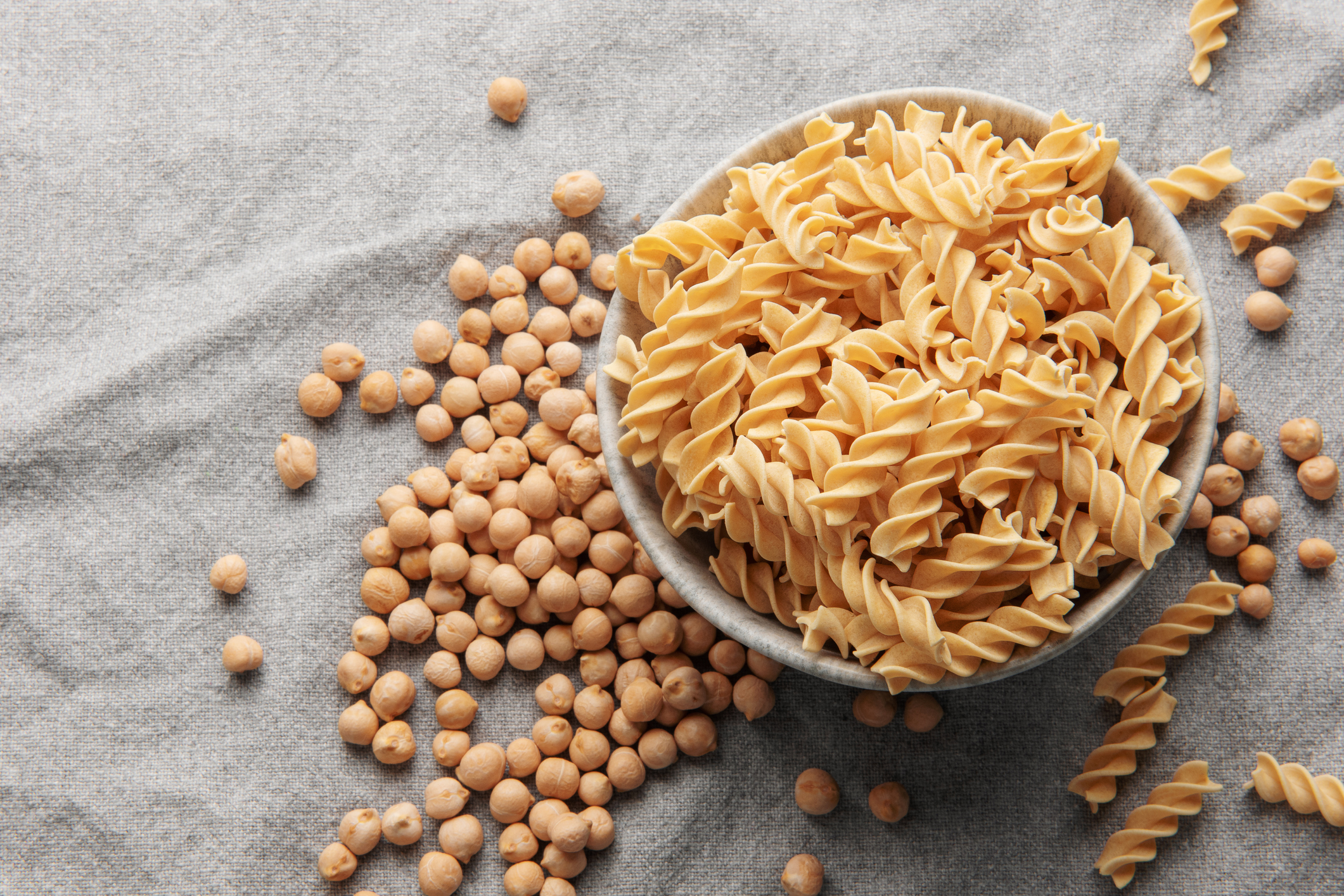DISCOUNT: UP TO 90% OFF






Pasta and Diabetes: Is Pasta Good for Diabetics?


Table of Contents
- The Integral Role of Diet in Diabetes Management
- Pasta and Blood Sugar: the Connection
- How Does Pasta Impact Blood Sugar Levels?
- The Glycemic Index of Pasta
- Pasta Diabetics Can Eat: Making the Right Choices
- Whole Grain Pasta
- Protein-Enriched Pasta
- Vegetable-Based Pasta
- How to Incorporate Pasta into Your Diet Safely as a Diabetic
- Tips to Eat Pasta Safely Being a Diabetic
- Choosing Pasta Types with Lower GI
- Watching Your Portion Sizes
- Pairing Your Pasta with Healthy Proteins and Fats
- Trying Vegetable-Based Pasta
- Conclusion
- About The Author
Is pasta good for diabetics? This seemingly simple question brings to light a far more complex and intricate aspect of living with diabetes: dietary management. For those living with diabetes, managing blood sugar levels is a constant balancing act. The food choices they make are about more than just satisfying hunger or cravings - they can directly affect their health and well-being. Carbohydrates, found in a myriad of foods, including pasta, are a particular point of focus.
They directly impact blood glucose levels, making the type and quantity of carbohydrates consumed essential factors to consider. But where does that leave pasta, a beloved staple in many diets and cuisines around the world? Is it off the menu for those with diabetes, or can it still find a place on their plates? In this article, we will delve into the relationship between pasta and diabetes, unraveling the complexities of this question.
We'll explore how pasta impacts blood sugar levels, identify the types of pasta diabetics can safely consume and provide practical tips on how to safely incorporate pasta into a diabetic-friendly diet. Through it all, our aim is to provide useful, practical guidance for those with diabetes who are trying to navigate their dietary choices. So, let's begin our exploration into the world of pasta for diabetics.
The Integral Role of Diet in Diabetes Management
Moving forward on the path to demystifying the question, "Is pasta good for diabetics?", it's essential to appreciate the significant role diet plays in managing diabetes. The foods and beverages you consume have a direct and substantial impact on your blood sugar levels, making dietary decisions critical for individuals with diabetes. The reason behind this lies in how different foods influence the body's glucose metabolism. Foods rich in carbohydrates, such as bread, rice and yes, pasta, break down into glucose during digestion.
This glucose then enters the bloodstream, affecting blood sugar levels. Therefore, carbohydrate-rich foods can cause blood sugar spikes if consumed in excessive quantities without considering their type or quality. However, it's not only about carbohydrates. The overall quality and composition of your diet matter as well. Foods rich in fiber, for instance, slow down the absorption of glucose into the bloodstream, preventing sudden spikes in blood sugar levels.
On the other hand, high-fat foods can lead to weight gain—a risk factor for Type 2 diabetes—and can also interfere with the body's ability to use insulin. Moreover the timing and frequency of meals play a part too. Skipping meals or going for long periods without food can lead to low blood sugar levels, a condition known as hypoglycemia. Conversely, consuming large quantities of food at one time can result in high blood sugar levels or hyperglycemia.
This nuanced relationship between diet and diabetes underscores the importance of dietary management for individuals with this condition. A balanced, nutritious diet tailored to maintain stable blood glucose levels is a cornerstone of diabetes management. This includes considering the type, quantity and timing of foods consumed and yes, deciding whether pasta has a place on the plate.
Pasta and Blood Sugar: the Connection
One of the most crucial aspects in understanding the question, "Is pasta good for diabetics?" is to explore the connection between pasta and blood sugar levels. The human body digests carbohydrates into glucose which then enters the bloodstream. Therefore, a diet heavy in carbs can lead to higher blood sugar levels. Since pasta is a carb-dense food, it can contribute to these elevated blood sugar levels. But it's not quite that simple; the type of pasta and its preparation can drastically impact its effect on blood glucose levels.
How Does Pasta Impact Blood Sugar Levels?
First, it's essential to acknowledge that pasta, like other carbohydrate-rich foods, can raise blood sugar levels. When you consume pasta, your body breaks down the carbohydrates into simple sugars that enter the bloodstream, prompting a response from the pancreas to release insulin. Insulin's role is to help sugar move from your blood to your cells for energy. If you have diabetes, this process is disrupted which leads to sugar accumulating in your bloodstream and causing high blood sugar levels.
However, not all pasta will influence your blood sugar levels the same way. Several factors can impact the degree to which different pastas affect blood sugar, including the type of grain used the pasta's shape and thickness and the method and duration of cooking. For instance, whole grain pasta tends to have a lesser effect on blood sugar than regular pasta made from refined grains. That's because whole grain pasta is higher in fiber which can slow down the rate of digestion and sugar absorption into the bloodstream.
On the other hand, regular pasta is made from refined grains stripped of the bran and germ during processing, removing much of the fiber and causing a faster rise in blood sugar. Additionally the pasta's shape and thickness can also play a role. Surprisingly, smaller and thinner pasta shapes tend to digest faster, causing a quicker rise in blood sugar, while larger and thicker shapes take longer to digest, leading to a more gradual increase in blood sugar.
The Glycemic Index of Pasta
One useful tool for understanding how different pastas can impact blood sugar is the glycemic index (GI). The GI measures how quickly a particular food can raise your blood sugar levels. Foods with a high GI value (70 or higher) are quickly digested and absorbed, causing a rapid rise in blood sugar. In contrast, foods with a low GI value (55 or less) are digested and absorbed at a slower rate, leading to a slower, more manageable increase in blood sugar.
When it comes to pasta, it's generally categorized as having a medium GI, typically ranging from 50 to 55. But here's where it gets interesting: the GI of pasta can be manipulated by how it is cooked. Al dente pasta which is cooked to be firm to the bite, actually has a lower GI than pasta that is cooked until it's soft. This is due to the harder structure of al dente pasta which takes longer to break down during digestion and thus releases glucose into the bloodstream more slowly. It's important to note that the GI isn't the only factor to consider when planning your meals.
The overall nutritional content of the food the amount you eat and what you eat with it also significantly impact blood sugar levels. For example, pairing pasta with foods high in protein and fiber can further help slow digestion and the release of glucose.
Therefore, while pasta can raise blood sugar levels the extent of this effect can vary greatly. The type of pasta, how it's cooked and what it's served with can all influence its impact on blood glucose levels. The key is to opt for whole grain versions, cook them al dente and serve in moderate portions alongside protein and fiber-rich foods. This approach allows you to enjoy pasta while keeping your blood sugar in check.
Pasta Diabetics Can Eat: Making the Right Choices
In the vast culinary world of pasta, it's crucial to remember that not all pastas are created equal. The ingredients the process of preparation and the method of cooking can all drastically change the nutritional content of the pasta dish you are about to consume.
For individuals with diabetes the types of pasta they choose can significantly affect their blood sugar levels. So, let's delve into the matter and explore the various pasta options available, focusing on which ones are most beneficial for diabetics.

Freshly made Pasta, ready to be served on your table
Whole Grain Pasta
A popular choice for many seeking a healthier pasta alternative, whole grain pasta is a fantastic option for diabetics due to its nutritious profile. Made from the entire grain kernel, whole grain pasta naturally retains more fiber and nutrients compared to its refined counterpart. But why does fiber matter for diabetics? Well, fiber plays a crucial role in digestion. It slows the absorption of sugars into the bloodstream, preventing abrupt spikes in blood sugar levels.
A slower and more steady absorption process can result in better control of blood glucose, making it easier to manage diabetes. Whole grain pasta also tends to have a lower Glycemic Index (GI) than regular pasta. The GI measures how quickly a particular food can raise blood sugar levels.
Foods with lower GI values are processed by the body at a slower rate, resulting in a more gradual rise in blood sugar levels instead of a rapid spike. As such, substituting regular pasta with whole grain pasta can indeed be a step towards a more diabetes-friendly diet.
Protein-Enriched Pasta
In the quest to find suitable pasta alternatives for diabetics, protein-enriched pasta makes it to the list. Made by adding protein sources like legumes, lentils, or protein powders into the pasta dough, this type of pasta boasts a higher protein content than traditional pasta. Protein plays a fundamental role in our bodies, from building and repairing tissues to making enzymes and hormones.
But it also has another important function for diabetics - protein takes longer to digest than carbohydrates. This means that it can provide a steady release of energy (and thus sugar) into the bloodstream, avoiding the sudden blood sugar peaks that could be problematic for those with diabetes. When you choose protein-enriched pasta, you're not only getting the satisfying taste and texture of regular pasta, but you're also consuming a meal that may help stabilize your blood sugar levels.
Vegetable-Based Pasta
As we continue our journey into the pasta realm, let's turn our attention to vegetable-based pasta. If you're wondering whether vegetables and pasta can coexist in the same sentence, let alone the same dish, I'm here to tell you - absolutely! Vegetable-based pasta typically uses vegetables as one of its primary ingredients, lending the pasta a unique color, flavor and a treasure trove of nutrients. Whether it's pasta made from zucchini, spinach, or other veggies, it's generally a healthier choice than regular pasta.
This is primarily because vegetable-based pasta usually has fewer carbs and more fiber. Why is this beneficial? Well the fiber can help slow down the digestion process resulting in more stabilized blood sugar levels, a factor that is crucial for diabetics.
So, whether you including the right types of (read: high-fiber) pasta in your diet and following a balanced approach towards your food can help you manage your diabetes better and live a healthier life. These are just a few of the many ways pasta can be tailored to suit a diabetic-friendly diet and the next time you're at the grocery store, don't forget to consider these healthier alternatives!
How to Incorporate Pasta into Your Diet Safely as a Diabetic
The first step to enjoying pasta safely as a diabetic involves understanding the nutritional composition of different types of pasta. Traditional white pasta, while delicious, is higher in carbohydrates and lower in fiber. This can cause blood sugar levels to spike which is a health risk for those with diabetes. Whole grain pasta, on the other hand, is higher in fiber and results in a slower release of glucose into the bloodstream. But the world of pasta doesn't end at white and whole grain.
There are various other types of pasta, such as chickpea pasta or lentil pasta, that are high in fiber and protein, resulting in a slower, more steady rise in blood sugar levels. Therefore, making a choice to incorporate these alternative pasta types can be a great way to safely incorporate pasta into a diabetic-friendly diet. The cooking method of pasta also plays a role in its impact on blood sugar levels. Interestingly, cooking pasta until it's 'al dente' - firm to the bite - can actually lower its Glycemic Index (GI).
This means the carbohydrates are broken down and absorbed more slowly, leading to a slower rise in blood sugar levels. Therefore, avoiding overcooked, mushy pasta can help you better control your blood sugar levels.
Additionally, adding spices and herbs can enhance the flavor of your pasta dishes without adding extra carbs or calories. Garlic, basil, oregano, chili flakes, black pepper and many other herbs and spices can add a wealth of flavor. Lastly, monitoring your blood sugar levels before and after meals can help you understand how different foods and portion sizes affect your individual response.
Regular monitoring can also assist in determining whether you need to adjust your medication, meal size, or physical activity to maintain blood sugar control. Incorporating pasta into a diabetic diet may seem challenging, but it is definitely possible with some planning and knowledge. Making the right pasta choices, controlling your portions, cooking pasta al dente, pairing pasta with lean proteins, non-starchy vegetables and healthy fats and regular blood sugar monitoring can all contribute to safely enjoying pasta even as a diabetic.
Tips to Eat Pasta Safely Being a Diabetic
When you're managing diabetes, your diet plays a crucial role in controlling your blood sugar levels. A common question among people with diabetes is, "Is it safe to eat pasta?" The answer is yes, but there are some key tips and tricks to follow to ensure you're consuming pasta in a manner that won't adversely affect your blood sugar levels. Let's dive deeper into these tips and explain why they're essential for a diabetes-friendly diet.
Choosing Pasta Types with Lower GI
The first tip for eating pasta safely as a diabetic is to select pasta types with a lower glycemic index (GI). The GI of a food item refers to how rapidly it causes your blood sugar to rise. Foods with a high GI can cause sudden spikes in blood sugar which can be harmful to individuals with diabetes. On the other hand, foods with a low GI cause a slower, more controlled increase in blood sugar levels, making them a healthier choice for diabetics. Not all pasta is created equal.
Different pasta types can have varying GIs, depending on their ingredients and the way they're cooked. For instance, whole grain pasta usually has a lower GI compared to refined pasta because it contains more fiber. Other low-GI pasta options include pasta made from lentils, chickpeas, or other legumes. These alternatives not only have a lower GI but also provide a good source of protein, making them an excellent choice for people with diabetes.
Watching Your Portion Sizes
Portion control is another crucial aspect of eating pasta safely as a diabetic. Even pasta types with a low GI can cause a significant rise in blood sugar levels if consumed in large quantities. Hence, it's essential to monitor the amount of pasta you eat per meal.
According to the American Diabetes Association, a healthy serving size for pasta is about one-third of a cup of cooked pasta, or roughly the size of a hockey puck. It might be less than you're used to, but remember, you can bulk up your meal with other diabetes-friendly foods like lean proteins and non-starchy vegetables to make it more filling.
Pairing Your Pasta with Healthy Proteins and Fats
What you eat your pasta with is just as important as the pasta itself. Pairing your pasta with healthy proteins and fats can slow down the absorption of carbohydrates and subsequently the rise in blood sugar levels. Consider topping your pasta with lean proteins like chicken, fish, or tofu.
These proteins not only enhance the nutritional value of your meal but also make it more satisfying. Similarly, adding healthy fats like avocado or olive oil can help moderate blood sugar levels. However, keep in mind that while these fats are healthy they're also high in calories, so moderation is key.
Trying Vegetable-Based Pasta
Finally, another effective strategy for eating pasta safely as a diabetic is to try vegetable-based pasta. This kind of pasta is usually made from zucchini, spinach, or other vegetables and can be a great low-carb alternative to traditional pasta.
Vegetable-based pasta is lower in calories and carbs and higher in fiber compared to regular pasta, making it a great option for people with diabetes. In addition to these types of pasta there are also pasta-like substitutes made from vegetables. For instance, spaghetti squash or spiralized zucchini can provide a pasta-like experience without the high carbs.
Conclusion
So, is pasta good for diabetics? The answer, as we've explored, is a nuanced yes. Pasta, when chosen wisely and consumed in the right portions, can be part of a balanced diet for individuals with diabetes. Of course, it's important to remember that managing diabetes involves more than just careful food choices. A holistic approach that includes regular exercise, adequate sleep, stress management and the use of helpful supplements like SugarMD Advance Glucose Support is key to successfully keeping your diabetes under control.
About The Author
Meet Dr. Ahmet Ergin a highly skilled and dedicated endocrinologist with a passion for diabetes care. Dr. Ergin earned his medical degree with honors from Marmara University in Istanbul. He completed internal medicine residency and endocrinology fellowship at Cleveland Clinic.
Dr. Ergin is board-certified in Internal Medicine, Endocrinology, Diabetes and Metabolism due to his vast medical expertise. He's a certified diabetes educator, author of "The Ultimate Diabetes Book," and founder of "the SugarMD YouTube channel."
Dr. Ergin offers exceptional diabetes care to his patients in Port Saint Lucie, FL, helping them manage effectively. Disclaimer: These statements have not been evaluated by the Food and Drug Administration. Information on this website isn’t intended to treat, cure or prevent any disease. Discuss with your doctor and do not self-treat.
Written By Dr. Ahmet Ergin
460 total articles
Meet Dr. Ahmet Ergin, a highly skilled and dedicated endocrinologist with a passion for diabetes care. Dr. Ergin earned his medical degree with honors from Marmara University in Istanbul. He completed internal medicine residency and endocrinology fellowship at Cleveland Clinic. Dr. Ergin is board-certified in Internal Medicine, Endocrinology, Diabetes, and Metabolism due to his vast medical expertise. He's a certified diabetes educator, author of “The Ultimate Diabetes Book,” and founder of “the SugarMD YouTube channel.” Dr. Ergin offers exceptional diabetes care to his patients in Port Saint Lucie, FL, helping them manage effectively. For a closer look into his insights and experiences, connect with Dr. Ahmet Ergin on LinkedIn, Instagram, and YouTube.”
Disclaimer: These statements have not been evaluated by the Food and Drug Administration. Information on this website isn't intended to treat, cure or prevent any disease. Discuss with your doctor and do not self-treat.
Products















